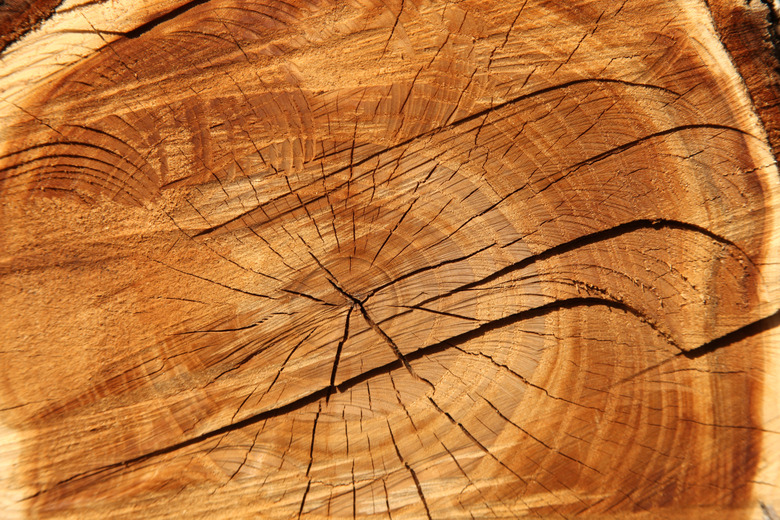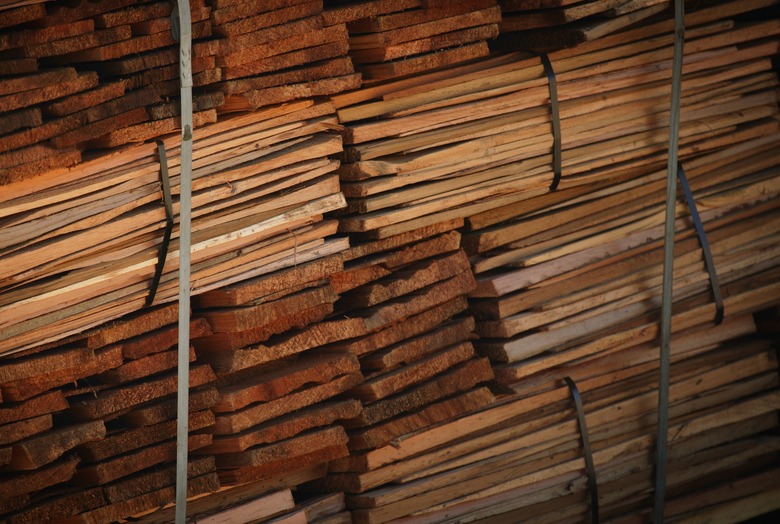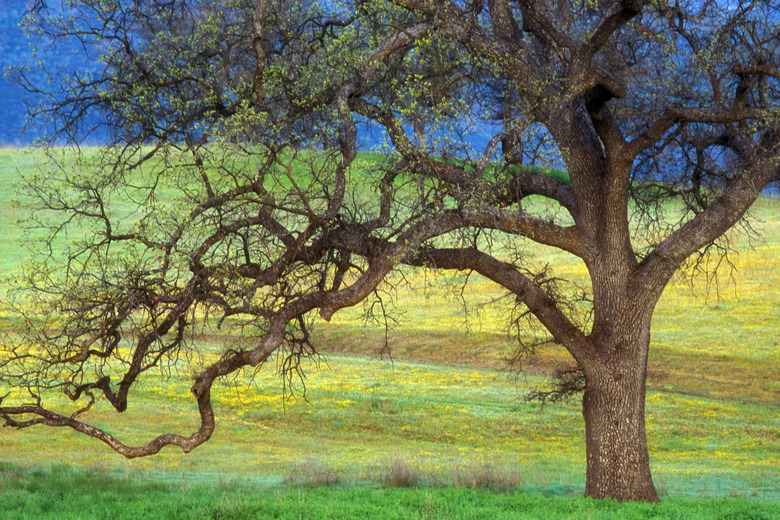Difference Between Mahogany & Oak Wood
Red oak and mahogany typify tradition in the United States. They're used universally to build cabinets, desks, molding, trim and other household items. Differences between them are insignificant when considering durability, application and longevity. The typical concern is mostly aesthetics and cost. Oak is less expensive than mahogany.
Variety and Availability
Variety and Availability
Two varieties of oak are readily available: red and white. Red oak is used the majority of the time. White oak is harder, more exclusive and has straighter grain patterns than red oak. Varieties of mahogany are imported from plantations in Latin America, Africa and a variety of tropical locations worldwide. Mahogany is listed as an endangered species on the International Union for the Conservation of Nature's Red List, but it remains readily available from certified dealers. Oak is grown and harvested domestically, readily available and not endangered.
Mahogany Origination
Mahogany Origination
Varieties of mahogany include Honduran, South American, Peruvian, Bolivian, Cuban, Big Leaf and True. All of them are typically marketed together and sold as "genuine mahogany." Two other varieties differ slightly: African mahogany, because of its luster and hardness, is considered superior to genuine mahogany and is usually marketed separately from genuine. Because Philippine, or Lauan, mahogany tends to be bland and softer, it is considered inferior to genuine mahogany and is also marketed separately. If you order mahogany generically, you'll likely receive genuine mahogany.
High-End Varieties
High-End Varieties
Because of the prevalent usage, pricing, application and availability, the comparisons between oak and mahogany typically center on red oak and genuine mahogany. White oak and African mahogany are used more sporadically and are not considered mainstream. Instead, they are used more often for high-end furniture, exclusive homes and businesses. Depending on where it's purchased, the type and degree of milling, expect the price tag for mahogany to be twice to three times that of oak.
Color and Grain
Color and Grain
The color difference between oak and mahogany could be considered irrelevant. Even though mahogany is red or orange and oak is amber-colored, oak can be stained the same color as mahogany. The aesthetic differences center mostly around grain patterns. Mahogany grain is closely spaced and straight. If you prize a uniform, consistent appearance, choose mahogany. Oak displays bold, flame patterns that are complex and varied. Choose oak for a busy appearance. Oak grain lines are typically black. Mahogany grain lines are brownish and less prominent, so you may have to look closely to see them.
Trees and Boards
Trees and Boards
Mahogany trees are huge. Oak trees grow more slowly, have more branches and are typically smaller. Mahogany boards often exceed 12 inches in width. Oak boards rarely exceed 12 inches. Smaller oak boards can be assembled into panels, but color matching is required. Mahogany boards are more consistent in color and are easier to match.
Durability and Streaks
Durability and Streaks
Red oak is rated as perishable, with poor resistance to bugs. Mahogany is moderately durable, is not considered as perishable as oak and doesn't resist bugs. Mineral stains — gray streaks — are found on red oak. Mineral and water stains are not as common on mahogany as they are on oak.
Working Properties
Working Properties
Workability is similar in both species, but oak, rated at 1,220 on the universal hardness scale, is harder than mahogany, which ranks 900 on the same scale. The difference in hardness means oak is more likely to shatter or splinter than mahogany when milled. Carbide-tipped tools are recommended for both species. The harder, more complex grain patterns in oak make it less desirable for turnings, carvings and hand machining. The consistent, straight grain pattern of mahogany is preferable for hand working and carving.







